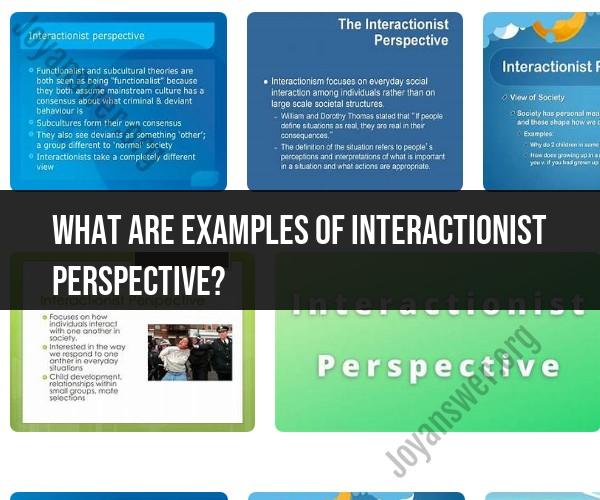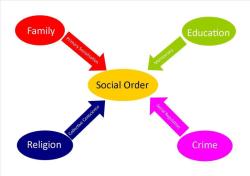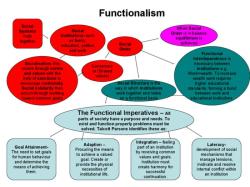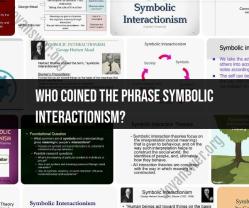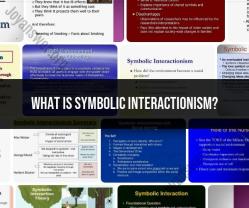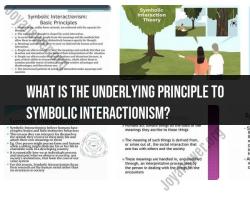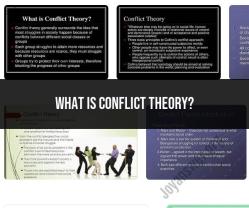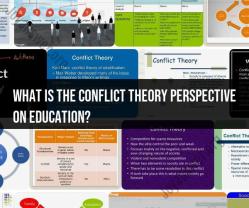What are examples of interactionist perspective?
The interactionist perspective, also known as symbolic interactionism, is a sociological and social psychological theory that focuses on how individuals create and interpret symbols and meanings in their interactions with others. This perspective emphasizes the role of symbols, language, and communication in shaping social reality. Here are some examples of the interactionist perspective in action:
Labeling Theory: Interactionist scholars, such as Howard Becker, developed the labeling theory. This theory examines how the labels or identities assigned to individuals can influence their behavior and self-concept. For example:
- A person labeled as a "troublemaker" in school may start to act out more because they feel they are expected to do so.
Face-to-Face Communication: Interactionists study how people communicate face-to-face and how symbols and gestures are used to convey meaning. For instance:
- A nod of the head can signify agreement or understanding in a conversation.
- Nonverbal cues, like a smile or a frown, can convey emotions and influence the tone of a conversation.
Small Group Dynamics: Interactionists are interested in how small groups function and how group members interact. An example:
- In a work team, the use of inside jokes or shared language can strengthen the sense of belonging and camaraderie among members.
Role Theory: Interactionists examine how individuals enact and interpret their roles in society. For instance:
- A teacher may take on different roles in the classroom, such as an instructor, mentor, or disciplinarian, depending on the situation and the students' needs.
Symbolic Interaction in Online Communities: Interactionist perspective can be applied to online communities and social media, where symbols, emojis, and text-based communication play a significant role in conveying meaning and shaping interactions.
- The use of emojis like a thumbs-up or a heart can express approval or affection in online conversations.
- Hashtags and trending topics on social media platforms reflect the shared meanings and interests of a group of users.
Cultural Symbols: Interactionists study how cultural symbols, such as flags, religious symbols, or national anthems, hold shared meanings and influence behavior and identity.
- The American flag, for example, represents patriotism and national identity to many Americans, and its display can evoke strong emotions and reactions.
Family Interactions: Interactionists explore how family members communicate and create shared meanings within the family unit. For example:
- A family's inside jokes or traditions can reinforce a sense of belonging and shared history among its members.
Identity Formation: Interactionists are interested in how individuals construct their self-identity through interactions with others. An example:
- A person's self-concept and self-esteem can be shaped by feedback from friends, family, and society. Positive reinforcement can enhance self-esteem, while negative labels or criticism can diminish it.
These examples demonstrate how the interactionist perspective helps us understand the significance of symbols, language, and social interactions in shaping our perceptions, identities, and behavior in various social contexts.
Interactionist Perspective Examples: Exploring Social Interactions
The interactionist perspective is a sociological theory that focuses on the ways in which social interactions shape our identities and our understanding of the world around us. Interactionists believe that meaning is constructed through social interaction, and that our behavior is influenced by the roles and norms that we learn through these interactions.
Here are a few examples of the interactionist perspective in action:
- The way we dress: Our clothing choices are often influenced by the social groups we belong to and the roles we play in society. For example, a businessperson might dress in a suit and tie to convey a sense of professionalism, while a student might dress in more casual clothing.
- The way we speak: Our language use is also influenced by our social interactions. For example, we might use different slang terms when talking to our friends than when we are talking to our teachers or bosses.
- The way we behave in public: Our behavior in public is also influenced by social norms. For example, we might avoid talking loudly on our phones in a quiet library, or we might stand in line for a bus instead of cutting in front of other people.
Symbolic Interactionism in Action: Real-Life Examples
Symbolic interactionism is a branch of the interactionist perspective that focuses on the role of symbols in social interaction. Symbolic interactionists believe that symbols, such as words, gestures, and objects, are used to create and communicate meaning.
Here are a few real-life examples of symbolic interactionism in action:
- A handshake: A handshake is a symbolic gesture that is used to convey friendship, respect, or trust.
- A wedding ring: A wedding ring is a symbolic object that is used to signify marital status.
- A religious symbol: A religious symbol, such as a cross or a crescent moon, is used to represent a person's religious beliefs.
Understanding Interactionist Perspective: Instances and Applications
The interactionist perspective can be used to understand a wide range of social phenomena, including:
- Socialization: The process by which we learn social norms and values.
- Identity formation: The process by which we develop our sense of self.
- Deviance: Behavior that violates social norms.
- Social change: The process by which social norms and values change over time.
The interactionist perspective is a valuable tool for understanding the social world around us. It can help us to see how our own behavior is influenced by social interactions, and it can also help us to understand the behavior of others.
Here are a few examples of how the interactionist perspective can be applied in real life:
- A teacher might use the interactionist perspective to understand how students learn best in a classroom setting. The teacher might observe the ways in which students interact with each other and with the teacher, and use this information to create a more effective learning environment.
- A social worker might use the interactionist perspective to help a client who is struggling with substance abuse. The social worker might help the client to understand how their social interactions contribute to their addiction, and develop strategies for changing their behavior.
- A marketing manager might use the interactionist perspective to understand how consumers make purchasing decisions. The marketing manager might observe the ways in which consumers interact with products and services, and use this information to develop more effective marketing campaigns.
The interactionist perspective is a rich and complex theory that can be applied to a wide range of social situations. It is a valuable tool for anyone who wants to understand the social world around them.
